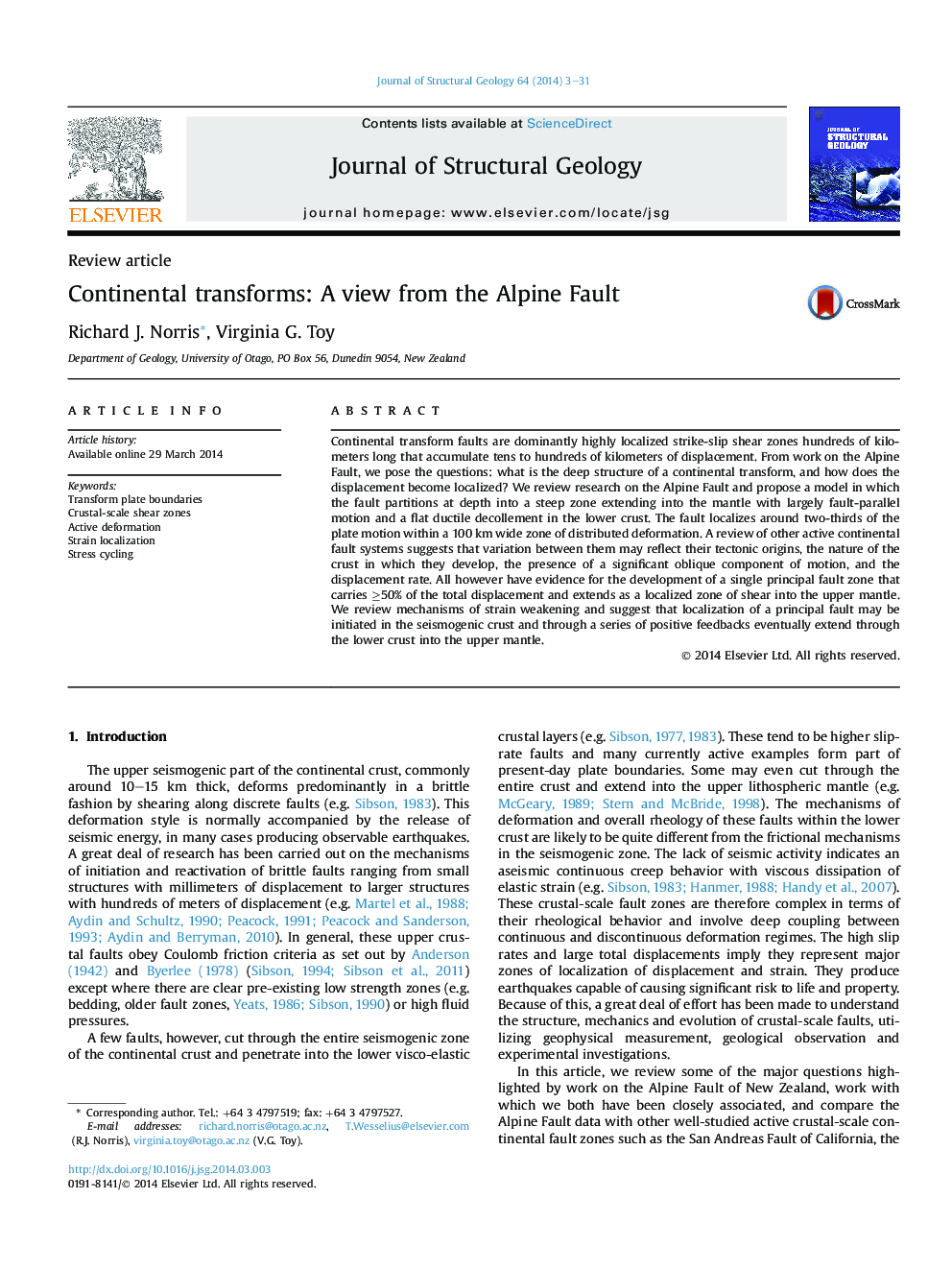| Article ID | Journal | Published Year | Pages | File Type |
|---|---|---|---|---|
| 4733154 | Journal of Structural Geology | 2014 | 29 Pages |
•Active continental transforms are localized zones through the lithosphere.•Transform systems vary with crustal properties, oblique motion, slip rate, etc.•All develop a single principal fault zone that carries ≥50% of the total displacement.•Localization occurs at upper crustal tectono-structural discontinuities.•Upper crustal behavior may drive downward propagation.
Continental transform faults are dominantly highly localized strike-slip shear zones hundreds of kilometers long that accumulate tens to hundreds of kilometers of displacement. From work on the Alpine Fault, we pose the questions: what is the deep structure of a continental transform, and how does the displacement become localized? We review research on the Alpine Fault and propose a model in which the fault partitions at depth into a steep zone extending into the mantle with largely fault-parallel motion and a flat ductile decollement in the lower crust. The fault localizes around two-thirds of the plate motion within a 100 km wide zone of distributed deformation. A review of other active continental fault systems suggests that variation between them may reflect their tectonic origins, the nature of the crust in which they develop, the presence of a significant oblique component of motion, and the displacement rate. All however have evidence for the development of a single principal fault zone that carries ≥50% of the total displacement and extends as a localized zone of shear into the upper mantle. We review mechanisms of strain weakening and suggest that localization of a principal fault may be initiated in the seismogenic crust and through a series of positive feedbacks eventually extend through the lower crust into the upper mantle.
